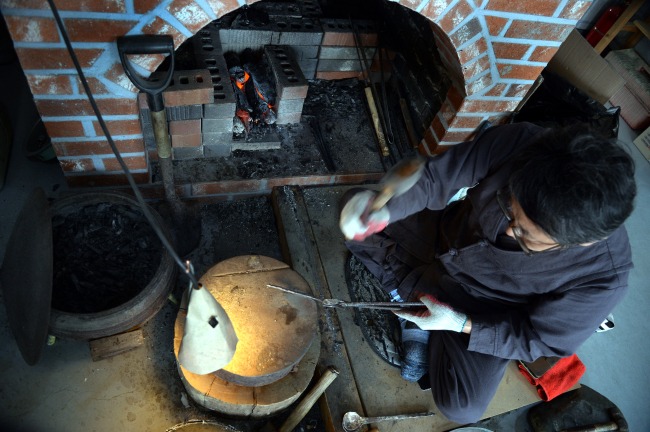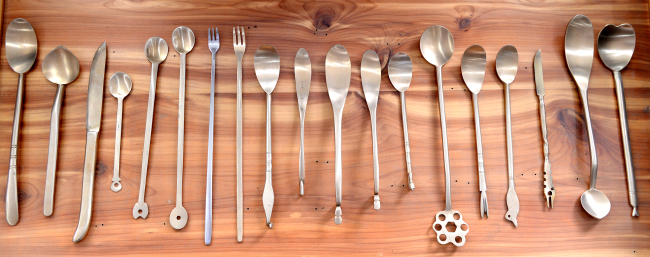Korean traditional bronzeware, called bangjja, is the ultimate in sophistication. Artisan Kim Ki-chan, who is a sixth-generation bangjja maker at his family-run business, makes just one pair of a bangjja chopsticks and spoon a day at his workshop in Yanggu, Gangwon Province. To make one bronze spoon, Kim pounds the metal more than 365 times with a hammer, then tempers and files it.
 |
Photo: Park Hyun-koo/The Korea Herald |
To Kim, making bangjja was more than just continuing his family business. It was his responsibility. Kim worries he might be the last to know the entire process of bangjja making, as fewer artisans in Korea engage in the traditional craft.
A complete set of bangjja includes dishes, bowls, spoons and chopsticks. And it’s the alloy ratio between copper and tin that sets bangjja apart from other bronzeware. Bangjja contains much more tin than others, with an alloy ratio of 78 percent copper to 22 percent tin. It has historically been used as tableware for the royal families of Korea. Its texture is soft and its surface shimmers. But while holding it, one can feel the weight of the artisan’s sweat and effort. Believed to be self-sterilizing, bangjja has become more popular these days. It is also said to be effective in preventing cancer and stroke.
 |
Photo: Park Hyun-koo/The Korea Herald |
Kim Ki-chan’s father, the late Kim Yong-rak was one of the few artisans who created high-quality bangjja using techniques handed down by his ancestors from the Joseon era. Kim Yong-rak died in 2008.
 |
Photo: Park Hyun-koo/The Korea Herald |
Kim Ki-chan currently operates his workshop in Baksugeun-ro in Yanggu, Gangwon Province.
By Hong Dam-young (
lotus@heraldcorp.com)






![[Weekender] Korea's traditional sauce culture gains global recognition](http://res.heraldm.com/phpwas/restmb_idxmake.php?idx=644&simg=/content/image/2024/11/21/20241121050153_0.jpg)



